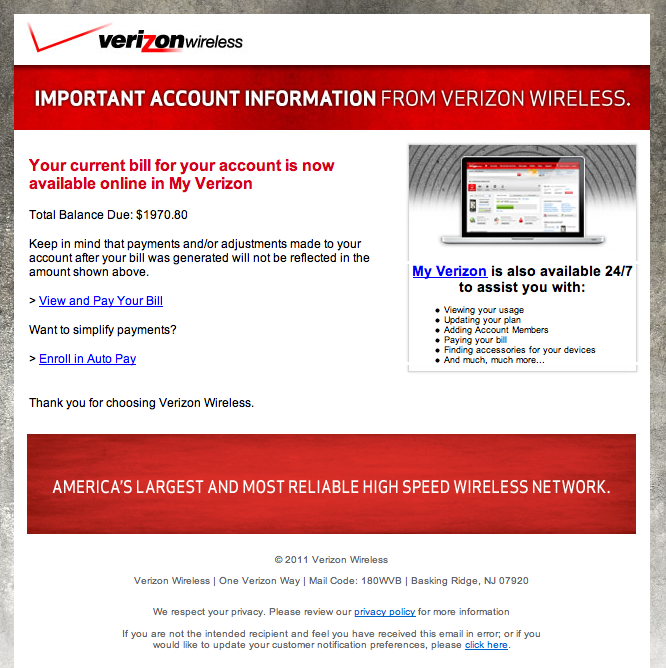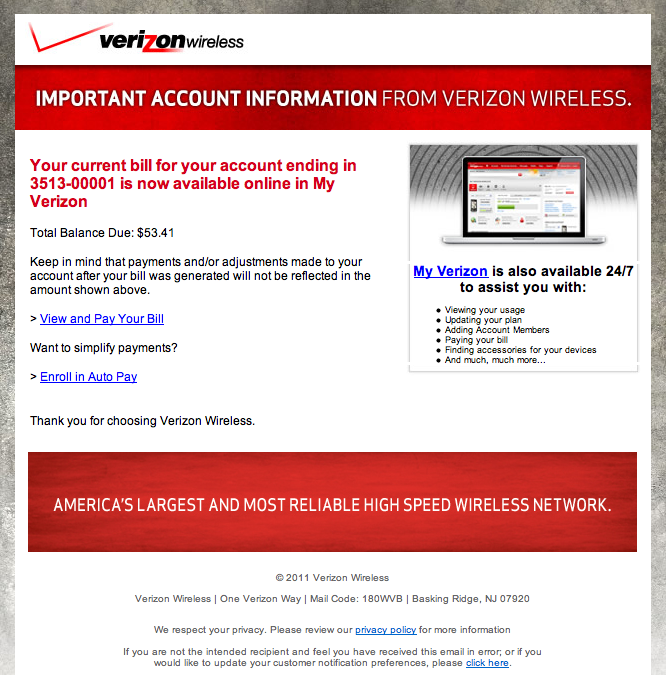Spot the Phish: Verizon Wireless
We have seen a couple of reports recently of pretty well done Verizon Wireless phishing attempts. At this point, I haven't gotten one with the target site still up, so they may try to install malware instead of just asking for Verizon credentials.
update: Paul just wrote in that he caught some of the links still active, and indeed they are trying to install malware and don't ask for credentials. And fellow handler Pedro notes that the malware is a blackhole exploit kit that will try to install Zeus.
See if you can spot the fake one. The answer is below the images (click to open image in new window at full resolution)
The left one is the fake. The only give away is that the fake e-mail doesn't include the partial account number, and typically indicates a large bill > $1,000 (at least large for me). I assume the large amount is supposed to cause panic clicking.
------
Johannes B. Ullrich, Ph.D.
SANS Technology Institute
Twitter
| Application Security: Securing Web Apps, APIs, and Microservices | Orlando | Mar 29th - Apr 3rd 2026 |




Comments
The interesting thing is the emails really are a duplicate of the real one, except for the Unsubscribe link. That is the one that's booby-trapped. All of the other links go to the real site.
I got one and said to myself "Grrr. I already clicked your stupid Unsubscribe link last week. Pay attention this time!" And then I saw the mouseover of where it really was going, a .cn domain.
JJ
Jun 14th 2012
1 decade ago
DBoggs
Jun 14th 2012
1 decade ago
Steven
Jun 14th 2012
1 decade ago
Dan
Jun 14th 2012
1 decade ago
Anonymous
Jun 14th 2012
1 decade ago
Dr. J.
Jun 14th 2012
1 decade ago
Paul
Jun 14th 2012
1 decade ago
We're seeing many phishing emails that are well crafted, pretending to be from numerous financial institutions, cable companies, and others. Often the links are the only give away.
Larry
Jun 14th 2012
1 decade ago
Anonymous Paul
Jun 14th 2012
1 decade ago
Moriah
Jun 14th 2012
1 decade ago